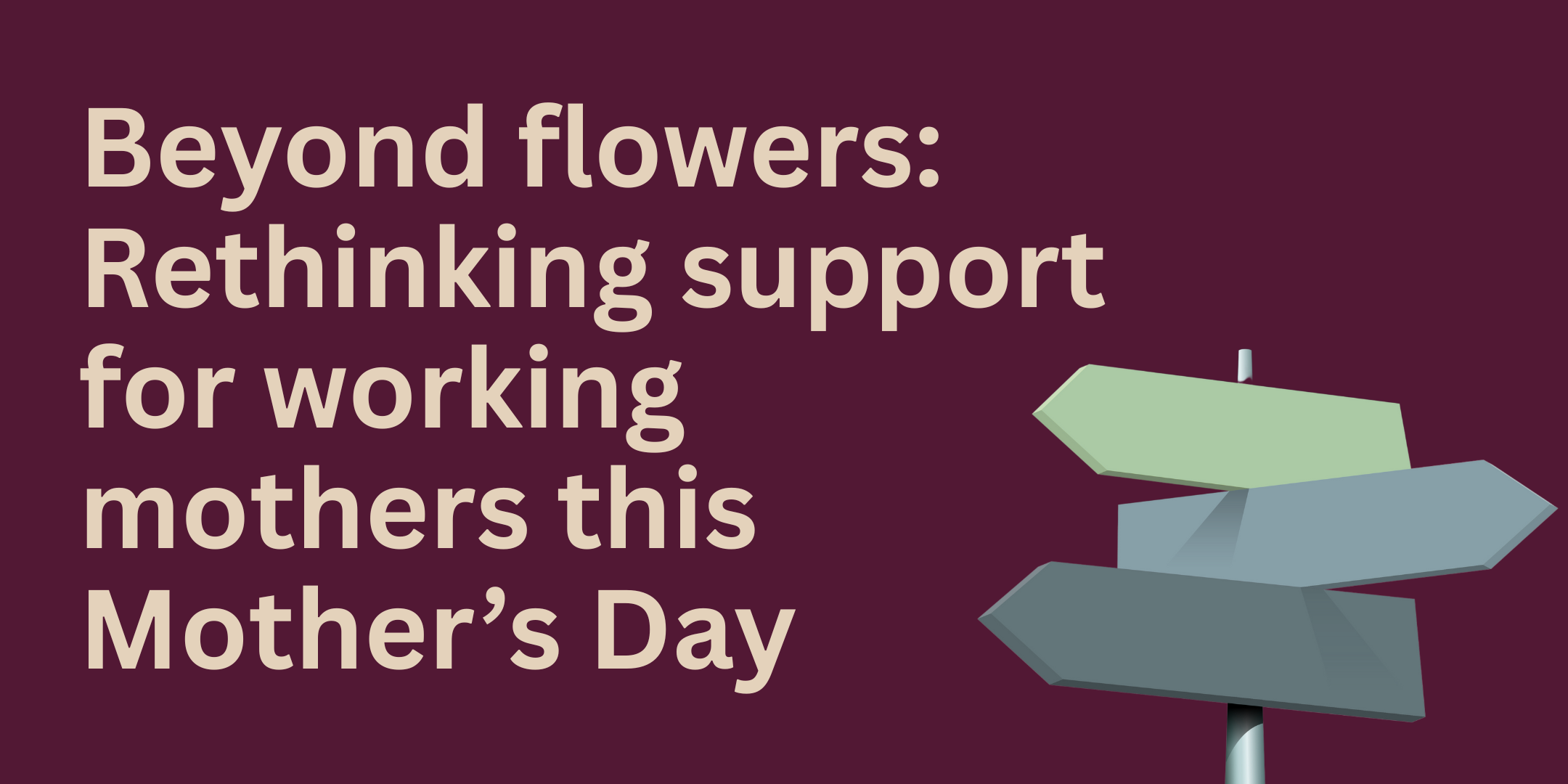
With Mother’s Day around the corner, it’s important to highlight the barriers mothers face at work and discuss how we can collectively help break them down.
The current work model wasn’t designed for moms, and it hasn’t evolved to fit modern family dynamics (the 9-5 workday was established nearly 100 years ago, yet the employment rate of mothers of young children has more than doubled in the last 50 years). Women still disproportionately take on the majority of household chores and caring responsibilities despite working — it’s not easy, and it’s even harder to advance without supportive systems in place.
In 2023, economist Claudia Goldin won the Nobel Prize in Economics for her work studying women at work and the gender pay gap. Goldin’s research showed that the pay gap is largely tied to motherhood. As mothers return to work, they often struggle through the transition and face new challenges in their professional trajectory.
“There’s a moment when childcare demands greatly lessen, and women can increase their hours of paid work and assume greater career challenges. We can think of that moment metaphorically, as when mothers reach a summit and then run down the other side of the mountain. But even though they increase their hours of work, they never reach the rich valley of gender equality,” writes Goldin in a research paper.
Goldin states that women will never reach gender equality until they’ve reached couples’ parity. Still, challenging parenting and unpaid work norms within your personal relationship is only one piece of the puzzle. Businesses must play their part, too, encouraging parental leave for men by limiting its negative perception and effects and putting in place support systems for women who have kids.
We know diversity and inclusion in the workplace benefit everyone; it causes teams to perform better and generate higher revenue, allows companies to have an increased employee retention rate and offers greater opportunities for innovation and creativity. In order to champion DEI, there’s a collective responsibility to support working moms. Here are a few ways your company can contribute to advancing gender equity in the workplace and listen to what working mothers need.
Allow flexibility and provide childcare support
When moms call for more flexibility at work, it doesn’t necessarily mean a fully remote job with the ability to work whenever they choose. However, if employers start by acknowledging that a traditional 9-5 doesn’t work for a parent unless their spouse is at home full-time, they may also start making small changes to help parents who don’t have that support.
Flexibility can look like a mom taking their child to an appointment in the middle of the day and working the extra hour at a different time or working earlier hours so they can do the after-school pickups. Similarly, organizations can consider a top-up of federal childcare subsidies for those with school-aged kids who find themselves paying more for after-school care.
Create a culture that supports families
Part of the motherhood penalty is the loss of salaries, promotions, pay increases and pension contributions women experience when they are on maternity leave. Having men take some of that leave is one of the best ways to close the gender equity gap at work, yet only 1 in 17 men take a parental leave.
Companies can create a culture where men can take leave without feeling guilty or as though they’re completely leaving their team. Changes can be as small as visibly making parental leave widely accepted and even expected through conversations like, “Congratulations on soon becoming a dad. When are you taking your parental leave?”
Companies must also offer supportive resources to make the transition back to work as seamless as possible, for both men and women. As an employer, examine your company’s return-to-work policy and ensure it’s well-timed and thoughtfully planned out. Ask your employees what they need and how you can best support them during this transition.
Offer pay transparency
Pay transparency is one of the many ways we can start closing the gender pay gap. Disclosing pay ensures that employees with the same qualifications are getting the same pay, including mothers who have had career interruptions. It helps women negotiate for more pay and know what they can expect for salary before entering a new professional commitment.
You can also do a pay equity analysis within your company to examine any existing inequalities and make the necessary adjustments.
Become and Axis member today to follow more conversations on women’s workplace advancement.

